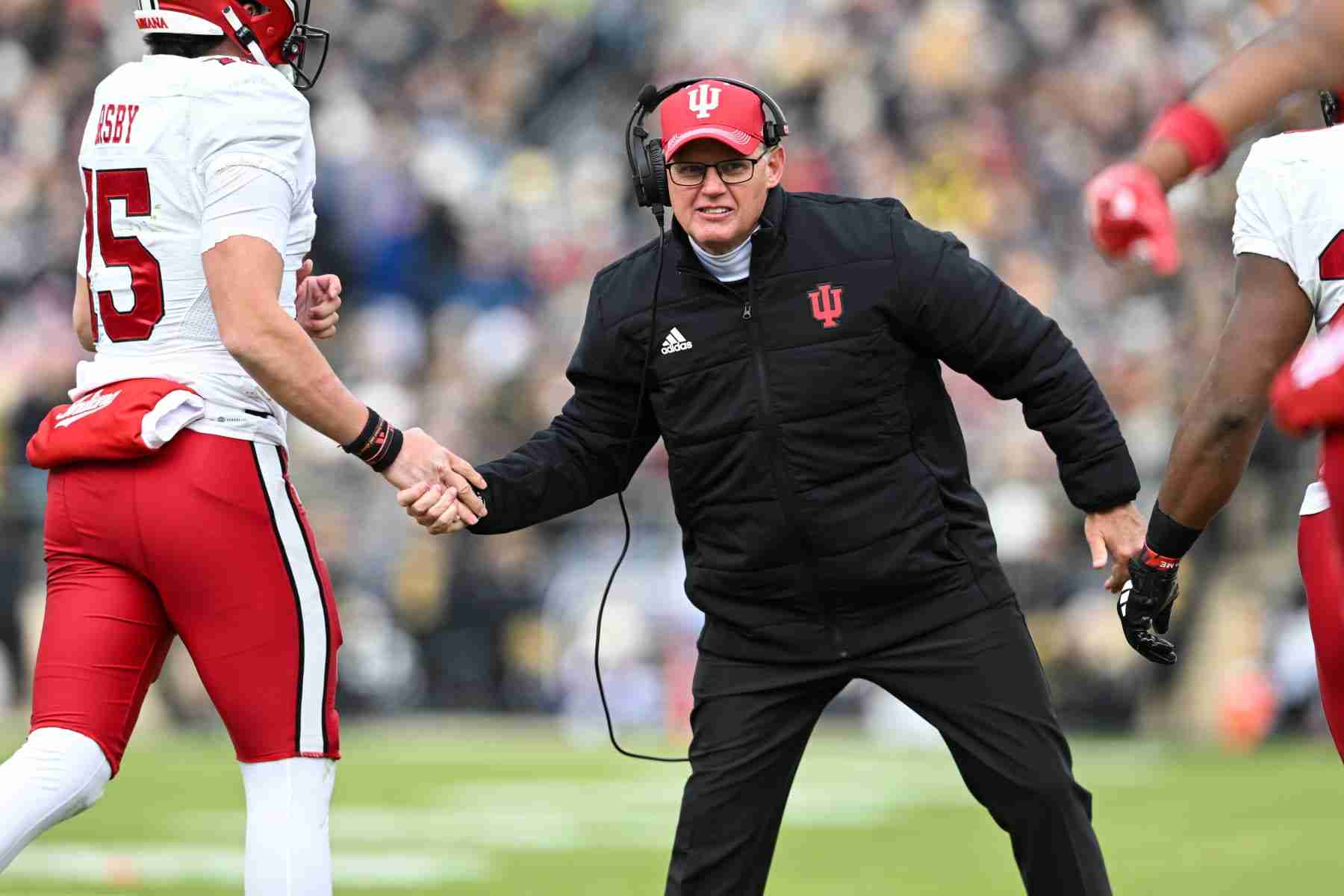Amid hysteria over the hiring of a high-profile coach and a prelude to the finality of the College Football Playoff, a basketball school paid a football coach more than $15 million to leaves on Sunday.
Technically, Indiana was supposed to owe more. With years remaining on Tom Allen’s (relatively new) contract, the Hoosiers were due $20 million. Through some negotiation, largely over compensation language, he will instead receive two payments of $7.75 million over the next 13 months to not coach.
Such is the life of a college football coach with a losing record in 2023.
This ritual of paying coaches millions of dollars to disappear is, of course, nothing new. From Charlie Weis to Gus Malzahn to Willie Taggart, coaches have been paid handsomely to stay home or become anchors for a period of time.
In recent years, as the stakes to be won have reached uncomfortable levels and coaching contracts have reached absurd thresholds, college football has been moving closer to a place of great discomfort.
If we’re not already there, we’d hate to see what makes an athletic department squirm.
Because so much money is invested in sports – through television contracts, NIL deals and beyond – the ceiling of what schools (and especially donors) are willing to put up with must be within reach tomorrow.
Indiana, which has a total of three winning football seasons since 1995, decided to pay a small fortune to make a change. (Oh, and the coach the school just fired produced two of those seasons.)
At Texas A&M, Jimbo Fisher will receive more than $75 million by 2031 for doing nothing. The holy grail of coaching buyouts is in its own genre when it comes to guaranteed payouts.
Fisher, who has coached at a school with as much donor support and resources as any program in the country, is an exception in a larger discussion. The fact that A&M had the financial backing to pay for it This However, big money speaks to the importance of football at the school, in the state and as a whole.
On the subject of Texas, Houston also decided to move on from a coach who recently signed a new contract.
The Cougars, still new to the Big 12, told Dana Holgorsen his services would no longer be needed Sunday. In 2021, he led the program to a spectacular 12-2 record. Two years later, he looked for work.
Well, maybe not immediately. Holgorsen is expected to receive nearly $15 million from the school as a parting gift. That could change depending on when and where he finally finds work, although it will still be a huge amount of money.
With Fisher’s big contribution to the overall tally, buyouts are well north of $110 million (and counting) so far this season. In short, it’s a lot of money. In fact, it’s an ungodly amount. And in many places, much of that money is paid by wealthy, willing alumni willing to do whatever it takes to produce a winner.
Much like the process of firing coaches before their contracts expire, this part isn’t new either. The only difference is that annual salaries for head coaches have seen a meteoric rise over the past decade and the length of those contracts has also lengthened.
As the sport grows in popularity, so do the expectations for all teams. The desire to win, coupled with the resources needed to compete, has generated costly space for those with the funds and influence to pull these levers.
This is all fueled by desperation. Hiring coaches to turn around a program is an expensive endeavor, as is keeping a coach coming off a special season and likely interested in other schools.
But when will it finally self-regulate? How many bad contracts need to be paid off before the sport finally re-evaluates the way it does business? How much is ultimately too much, even for a sport so accustomed to spending?
Perhaps the more important question is even simpler: Should we care?
It’s not your money. The athletic departments that pay for these contracts do so with a lot of help. They don’t write these checks themselves, nor could they. Not those kinds of controls.
Despite this simple reality, the current situation seems both unhealthy and untenable. As NIL and the transfer portal feed additional financial tentacles, this more traditional ritual feels like it’s hitting the next gear.
And until contracts are shorter and schools protect themselves more, none of this will change. While a buyout on the scale of Fisher may not happen again — or at least not for a while — the decisions made in Indiana, Houston and beyond are just the beginning.
Contracts aren’t getting any shorter, and they’re certainly not getting any cheaper. When costs and desperation collide, the result is prolonged risk and exposure. With increasingly short tolerance, sport finds itself in a very particular and costly phase.
The simple reality is: Until donors are willing to offer these types of payments, they will continue. And even if we still win such a coveted product, well, the spending will continue.
It’s hard to know exactly when (if ever) it will swing the other way. It will take a glut of bad deals and a possible decline in the fortunes doled out by those willing to write the checks right now.
Even then, will anything ever change?
The popularity of college football is indeed booming, and the result is continued regional and national interest that will only grow with the expansion of the postseason. More playoff spots will mean more money and more seats at the table. The more seats there are at the table, the more teams will believe they have a realistic chance.
It’s not just blue bloods and playoff hopefuls getting in on the action. What happened in Indiana and Houston shows us this.
College football’s latest phase of excess is here, and it’s unlikely to change anytime soon.

